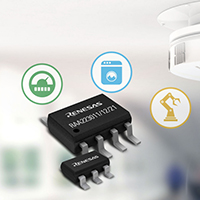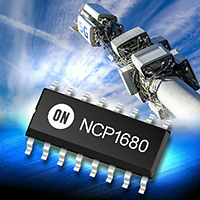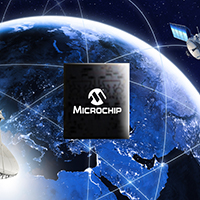Top 5 power products in June
Electronic Specifier takes a look at the top power products to have been released in June.
Renesas Electronics has unveiled a family of new 700V buck regulators that offers designers numerous advantages over competitive solutions. The new RAA2230XX devices deliver power consumption, noise and EMI suppression, as well as reduced overall system cost. They are suitable for a wide range of applications, including home appliances, sensing systems such as smoke alarms and gas sensors, white goods, power meters and industrial controls.
 The new RAA2230XX buck regulators consume only 10mW to 30mW when idle, helping system designers meet ever-tightening standby power regulations. They feature a unique switching algorithm which minimises electromagnetic interference (EMI) and eliminates audible noise, such as ‘humming’ or ‘whining’ that can affect competitors’ solutions. The new regulators also can supply as low as 3.3V output, enabling designers to eliminate a second-stage Low Dropout Regulator (LDO), saving BOM cost and board space.
The new RAA2230XX buck regulators consume only 10mW to 30mW when idle, helping system designers meet ever-tightening standby power regulations. They feature a unique switching algorithm which minimises electromagnetic interference (EMI) and eliminates audible noise, such as ‘humming’ or ‘whining’ that can affect competitors’ solutions. The new regulators also can supply as low as 3.3V output, enabling designers to eliminate a second-stage Low Dropout Regulator (LDO), saving BOM cost and board space.
The new buck regulators connect to the AC line to power Renesas MCUs, sensors and other digital ICs. Renesas has developed numerous Winning Combinations that include the new devices. Winning Combinations consist of complementary analogue, power, timing devices and embedded processing, and provide an easy to use architecture, simplifying the design process and significantly reducing design risk for customers in a wide variety of applications.
For example, the Household Smoke Detector winning combination demonstrates a turnkey architecture for a residential smoke alarm, suitable for smart industrial control terminals. Renesas offers over 200 winning combinations with compatible devices that work together seamlessly.
ROHM’s AC/DC converter ICs with a built-in 1,700V SiC MOSFET, BM2SC12xFP2-LBZ in the TO 263-7L package, are optimised for industrial applications focusing on auxiliary power supply for street lamps, commercial air-conditioning systems, general-purpose inverters and for AC servo drives.
 An auxiliary power supply is an essential and vital part of industrial applications to deliver different levels of DC voltages for gate drivers and control units. By applying existing Si MOSFET devices, the designer cannot achieve higher efficiency and increased out power because of the higher losses of Si devices. The existing solutions require a heatsink and additional components which increase both the losses of the devices and the size of the system by additional space. To design an auxiliary power supply with existing Si devices will also be expensive because of a larger Bill of Material (BOM).
An auxiliary power supply is an essential and vital part of industrial applications to deliver different levels of DC voltages for gate drivers and control units. By applying existing Si MOSFET devices, the designer cannot achieve higher efficiency and increased out power because of the higher losses of Si devices. The existing solutions require a heatsink and additional components which increase both the losses of the devices and the size of the system by additional space. To design an auxiliary power supply with existing Si devices will also be expensive because of a larger Bill of Material (BOM).
ROHM’s BM2SC12xFP2-LBZ power ICs are the Quasi-resonant (QR) AC/DC converters with an integrated 1,700V SiC MOSFET in a single compact surface mount package (TO263). These ICs are the right fit and best in class products for industrial auxiliary power supply solutions in terms of efficiency, shortening design time, simplifying the circuitry and reducing additional components by offering integrated solutions. These ICs also increase product reliability by minimising the risk of component failure.
When used in 400VAC 48W output auxiliary power supplies, besides enabling automatic board mounting that was not previously possible, the number of external parts can be significantly reduced compared with standard configurations – from 12 parts and heat sink to just one.
ON Semiconductor has announced a dedicated critical conduction mode (CrM) totem pole PFC controller as a new addition to their solution set for ultra-high density offline power supplies.
In conventional PFC circuits, the rectifier bridge diodes account for around 4 W of losses in a 240 W power supply, representing around 20% of total losses. In contrast, PFC stages are typically 97% efficient and the LLC circuit achieves similar performance.
However, replacing the lossy diodes with switches in a ‘totem pole’ configuration and pulling in the boost PFC function can cut down the bridge losses and significantly improve overall efficiency. Further, NCP1680 can accommodate any switch type whether it is super junction silicon MOSFET or Wide Bandgap switches such as Silicon Carbide (SiC) or Gallium Nitride (GaN) devices.
 The new NCP1680 CrM totem pole PFC controller employs novel current limit architecture and line phase detection while incorporating proven control algorithms to deliver a cost-effective Totem Pole PFC solution without compromising on performance. At the heart of this IC is an internally compensated digital loop control.
The new NCP1680 CrM totem pole PFC controller employs novel current limit architecture and line phase detection while incorporating proven control algorithms to deliver a cost-effective Totem Pole PFC solution without compromising on performance. At the heart of this IC is an internally compensated digital loop control.
The innovative device employs a constant on-time CrM architecture with valley switching. Modern efficiency standards, including those that require high efficiency at light load, can also be met due to inbuilt discontinuous conduction mode (DCM) with valley synchronised turn-on during frequency fold back operation.
Satellite communication systems use complex modulation schemes to achieve the fast data rates required to deliver video and broadband data. To attain this, they must deliver high RF output power while simultaneously ensuring the signals retain their desired characteristics. The new GMICP2731-10 GaN MMIC power amplifier announced by Microchip Technology helps meet the requirements of GaN RF.
The new device, Microchip’s first GaN MMIC, is designed for use in commercial and defense satellite communications, 5G networks and other aerospace and defense systems.
 The GMICP2731-10 is fabricated using GaN-on-Silicon Carbide (SiC) technology. It delivers up to 10W of saturated RF output power across the 3.5GHz of bandwidth between 27.5 to 31GHz. Its power-added efficiency is 20%, with 22 dB of small-signal gain and 15 dB of return loss. A balanced architecture allows the GMICP2731-10 to be well matched to 50-ohms and includes integrated DC blocking capacitors at the output to simplify design integration.
The GMICP2731-10 is fabricated using GaN-on-Silicon Carbide (SiC) technology. It delivers up to 10W of saturated RF output power across the 3.5GHz of bandwidth between 27.5 to 31GHz. Its power-added efficiency is 20%, with 22 dB of small-signal gain and 15 dB of return loss. A balanced architecture allows the GMICP2731-10 to be well matched to 50-ohms and includes integrated DC blocking capacitors at the output to simplify design integration.
“As communication systems employ complex modulation schemes such as 128-QAM and as the power of solid-state power amplifiers (SSPAs) trends ever upwards, RF power amplifier designers have the difficult challenge of finding higher power solutions while at the same time reducing weight and power consumption,” said Leon Gross, Vice President of Microchip’s Discrete Products Group business unit. “GaN MMICs used in high power SSPAs can achieve greater than 30% lower power and weight as compared to their GaAs counterparts, which is a huge gain for satellite OEMS. This product delivers on the promise of GaN and enables the size, weight, power and cost OEMs are searching for.”
Power Integrations has announced LinkSwitch-TNZ, a new switching power supply IC that combines offline power conversion, lossless zero-cross detection and, optionally, X-capacitor discharge functions in a compact SO-8C package. The highly efficient LinkSwitch-TNZ IC can be used for non-isolated buck and buck-boost power supplies up to 575mA output current and provides up to 12W output for universal-input isolated flyback designs.
Adnaan Lokhandwala, Product Marketing Manager at Power Integrations said: “The new LinkSwitch-TNZ ICs provide an accurate signal indicating that the sinusoidal AC line is at zero volts. This signal is used by smart home and building automation (HBA) products and appliances to control the switching of relays, IGBTs and TRIACs to minimise switching stress and system in-rush current.
 “LinkSwitch-TNZ’s detection of the zero-cross point consumes less than 5mW, allowing systems to reduce standby power losses versus alternative approaches that require ten or more discrete components and burn 50 to 100 mW of continuous power.”
“LinkSwitch-TNZ’s detection of the zero-cross point consumes less than 5mW, allowing systems to reduce standby power losses versus alternative approaches that require ten or more discrete components and burn 50 to 100 mW of continuous power.”
Devices such as light switches, dimmers, sensors, and plugs connect and disconnect the AC line periodically using a relay or TRIAC. A discrete circuit is typically implemented to detect the AC line zero-crossing to control the turn-on transition of the main power device while reducing switching losses and in-rush current.










